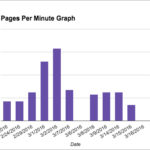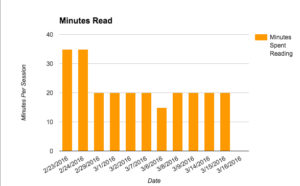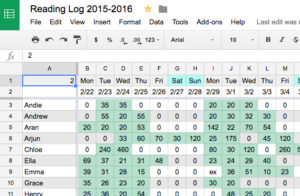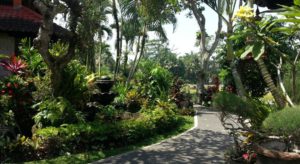This year, The Loft has exploded with professional development opportunities. Unfortunately, as someone who just moved from being a technology coach back to being a classroom teacher, I was so busy with the day-to-day life of the classroom that I did not find time to attend any of the offerings.
Fortunately for me, the tech team found a way to give graduate credit for attending the professional development offerings. My need for graduate credits to support the five-year renewal of my teaching license moved attending the workshops from a want to a need. Despite knowing the prep time I used to attend the course would come out of my sleep time, I was looking forward to attending. I expected to be made familiar with a few new tech tools and see a variety of options for making use of those tools in the classroom. That would be a useful format for me, especially second semester when I was not paddling quite as frantically to be prepared to teach each day.
As useful as that would have been, The Loft professional development was much more. Instead of focusing on tools, the sessions were built around Best Practices, showing how technology could be leveraged to support and extend those practices. Big ideas such as differentiation and assessment were the core of each session, and all of the tools supported that work.
For example, one session was titled Google Spreadsheets: Classroom Applications, Visualizing Data, and Assessment. It did start out with some low hanging fruit, such as a really flexible student picker that I probably used weekly for making pairs, triads, splitting into teams, etc. It also showed an easy way to generate flashcards that will be useful next year. I am eager to try the quiz show generator. My students find that to be an engaging way to review for tests, and the site I have been using is cumbersome and the font is too small.
Then the session moved into the heavy lifting uses. I had already been using the Google Sheets script Autocrat for years. However, I had only been using it for mail merging personalized letters. This session blew me away with the powerful uses. Then it brought in other scripts such as Doc Appender and the one I have used but can not find as I write this, that let me take that data and pull it into a book-like document with a page for each record. So. Incredibly. Useful.
I went home that night and worked until the wee hours applying what I had learned to solve niggling problems. I revamped my reading log system. I created a spreadsheet with a tab for each child. The children went in and entered their reading log data each data. They could have it auto-fill titles which they loved. The data automatically populated two charts. One showed their pages per minute average, and the other tracked their time spent reading. Those were motivating to some of my students.


Next, I worked with my tech coach, Shaun Kirkwood, whose spreadsheet wizardry far outstrips my own. He added magical formulas which totaled each child’s reading on a class summary sheet, regardless of how many entries they made in a day. This saved me tons of time every day.

After that, I created a form to push my students’ thinking about their reading. I used Doc Appender to feed that data into a page for each child. This page made it easy for the children, their families, and for me to track the growth in their thinking about reading.
Later that time, I continued to work with my tech coach to refine the process. I have not yet decided which format worked best, but all were much more useful to me and to the students – even if the students did not like them.
My next step, besides deciding on which reading logs to use next year, is to develop conferencing forms. The same method of a Google Form combined with Doc Appender will let me quickly take notes while conferencing, and then view a child’s data all in one place. I am trying to think of ways to use the main response spreadsheet to easily tell how often and how recently I have conferenced with each child.
Another step is to figure out how to use these with book clubs. Sometimes, I’ve used my book clubs. The YouTube session taught me about adding annotations and bookmarks into YouTube videos. I already have my students record their discussions and upload them to our class YouTube channel. I think I can use the new skills from that session to help them better reflect on their discussions which should lead to more growth.
I am out of space and still have many other sessions to discuss, such as the Game-Based Learning, the changes to TouchCast which I haven’t used yet with my students, but feel better able to tackle now, and how useful it was to be forced to learn more about Google Photos – an application I’ve had a love –hate relationship with since it was introduced. Thanks to this session, I was able to help my students use it more effectively.
But now, it is summer. I am writing this from a lovely garden in Ubud, Bali. Doves are cooing in the trees and ducks are quacking in the rice paddy. It is time for teachers and their instructors to unplug and decompress. Thank you for a great quarter of learning.

